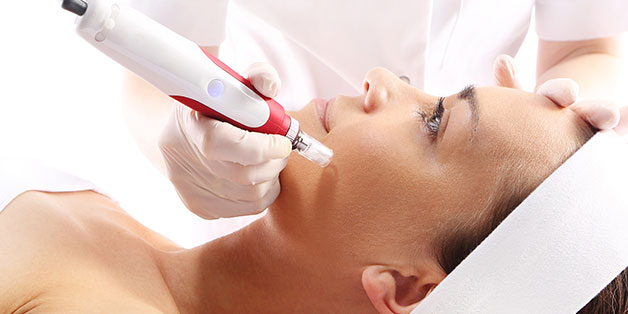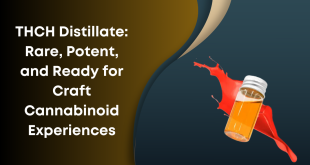Microneedling, also known as collagen induction therapy, is a minimally invasive cosmetic procedure that has gained immense popularity for its effectiveness in treating various skin concerns, particularly acne scars and stretch marks. This innovative treatment involves the use of fine needles to create controlled micro-injuries in the skin, stimulating the body’s natural healing processes and promoting the production of collagen and elastin. If you’re struggling with acne scars or stretch marks, you might be searching for “microneedling near me.” In this blog, we will delve into the science behind microneedling, how it can help with these specific skin issues, what to expect during the procedure, and aftercare tips for optimal results.
Understanding Acne Scars and Stretch Marks
What Are Acne Scars?
Acne scars are the result of inflammation caused by acne. When the skin is injured due to acne, it can heal improperly, leading to various types of scars, including:
- Atrophic scars: These are depressed scars that form when the body doesn’t produce enough collagen during the healing process. They are often characterized by a pitted appearance.
- Hypertrophic scars: These are raised scars that occur when the body produces too much collagen during the healing process.
- Keloid scars: These are a more extreme form of hypertrophic scars, extending beyond the original injury site and often appearing raised and firm.
What Are Stretch Marks?
Stretch marks, or striae, are long, narrow streaks or lines that develop on the skin due to rapid stretching. They commonly occur during pregnancy, puberty, weight gain, or rapid muscle growth. Stretch marks can vary in color from red, purple, or dark brown to white or silver, depending on skin tone and age.
How Microneedling Works
Microneedling involves the use of a specialized device equipped with tiny needles. During the procedure, these needles create micro-injuries in the skin, which triggers the body’s natural wound healing process. This leads to increased collagen and elastin production, helping to improve skin texture and tone. Here’s a step-by-step overview of the microneedling process:
- Consultation: Before the procedure, a thorough consultation with a qualified practitioner is essential. They will assess your skin type, discuss your concerns, and determine if microneedling is the right treatment for you.
- Preparation: On the day of the treatment, your skin will be cleansed and a topical numbing cream will be applied to minimize discomfort during the procedure.
- Microneedling Procedure: The practitioner will use the microneedling device to create controlled micro-injuries in the targeted areas. The depth of the needles can be adjusted based on the specific skin concerns being treated.
- Post-Procedure Care: After the treatment, a soothing serum may be applied to calm the skin. It’s normal to experience some redness and swelling, similar to a mild sunburn.
Benefits of Microneedling for Acne Scars
1. Stimulates Collagen Production
One of the primary benefits of microneedling for acne scars is its ability to stimulate collagen production. Collagen is a vital protein that helps maintain skin structure and elasticity. By promoting collagen synthesis, microneedling can help reduce the appearance of atrophic scars, making the skin appear smoother and more even.
2. Improves Skin Texture and Tone
Microneedling can improve overall skin texture and tone, addressing uneven pigmentation and roughness often associated with acne scars. As collagen builds up, the skin becomes more resilient and youthful, giving it a refreshed appearance.
3. Reduces Hyperpigmentation
In addition to improving texture, microneedling can help reduce hyperpigmentation caused by acne. By encouraging skin cell turnover, it can lighten dark spots and promote a more uniform skin tone.
4. Minimally Invasive with Quick Recovery
Unlike more invasive procedures like laser treatments or surgical interventions, microneedling is minimally invasive. Most patients experience only mild discomfort during the procedure and can resume normal activities within a day or two.
Benefits of Microneedling for Stretch Marks
1. Enhances Skin Elasticity
Stretch marks form when the skin is stretched beyond its limits. Microneedling can enhance skin elasticity by promoting collagen and elastin production, helping the skin to better withstand future stretching.
2. Fades Existing Stretch Marks
Microneedling can effectively fade existing stretch marks by stimulating the healing process and encouraging the growth of new skin cells. Over time, the appearance of stretch marks can significantly diminish.
3. Safe for All Skin Types
Microneedling is safe for all skin types and tones, making it a versatile treatment option for individuals seeking to address stretch marks. Unlike certain laser treatments that may not be suitable for darker skin, microneedling can be performed on anyone.
4. Customizable Treatment Depth
The ability to customize the depth of the microneedling treatment allows practitioners to target different types of stretch marks, whether they are newer, red or purple, or older, white, or silver.
What to Expect During the Procedure
Consultation
During your initial consultation, your practitioner will discuss your medical history, skin concerns, and treatment goals. This is an excellent time to ask questions and discuss any potential risks.
The Procedure
The microneedling procedure typically takes about 30 to 60 minutes, depending on the treatment area. After numbing your skin, the practitioner will carefully perform microneedling on the targeted areas. You may feel a slight prickling sensation, but discomfort is usually minimal.
Aftercare
After the procedure, you may notice some redness and swelling, similar to a mild sunburn. This usually subsides within a few hours to a couple of days. It’s important to follow your practitioner’s aftercare instructions, which may include:
- Avoiding sun exposure and using sunscreen
- Refraining from using harsh skincare products for a few days
- Keeping the skin moisturized
- Avoiding strenuous exercise for 24 hours
How Many Sessions Are Needed?
The number of microneedling sessions required varies based on individual skin concerns and treatment goals. For optimal results in treating acne scars and stretch marks, most practitioners recommend a series of 3 to 6 sessions, spaced about 4 to 6 weeks apart. Your practitioner will create a customized treatment plan tailored to your specific needs.
Finding Microneedling Near You
If you’re considering microneedling to address acne scars or stretch marks, it’s essential to find a reputable provider near you. Look for licensed practitioners who specialize in microneedling and have positive reviews from previous clients. You can search online using keywords like “microneedling near me” to find local clinics that offer this service. Always schedule a consultation beforehand to ensure that the practitioner is experienced and that you feel comfortable with them.
Conclusion
Microneedling is an effective, minimally invasive treatment option for individuals struggling with acne scars and stretch marks. By stimulating collagen and elastin production, this procedure can help improve skin texture, tone, and elasticity, resulting in a smoother, more youthful appearance. If you’re interested in exploring microneedling, take the first step by researching “microneedling near me” and scheduling a consultation with a qualified practitioner. With the right approach and commitment to aftercare, you can achieve remarkable results and regain confidence in your skin.
Read More –
Why a Chiropractor in Hoffman Estates Can Change Your Life
Quick Fixes for the Most Common AC Issues in Coastal Areas
 Diverse Perspectives: Insights & Stories Exploring Ideas, Sharing Knowledge
Diverse Perspectives: Insights & Stories Exploring Ideas, Sharing Knowledge





